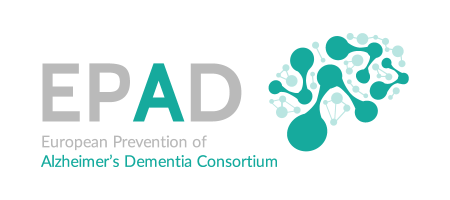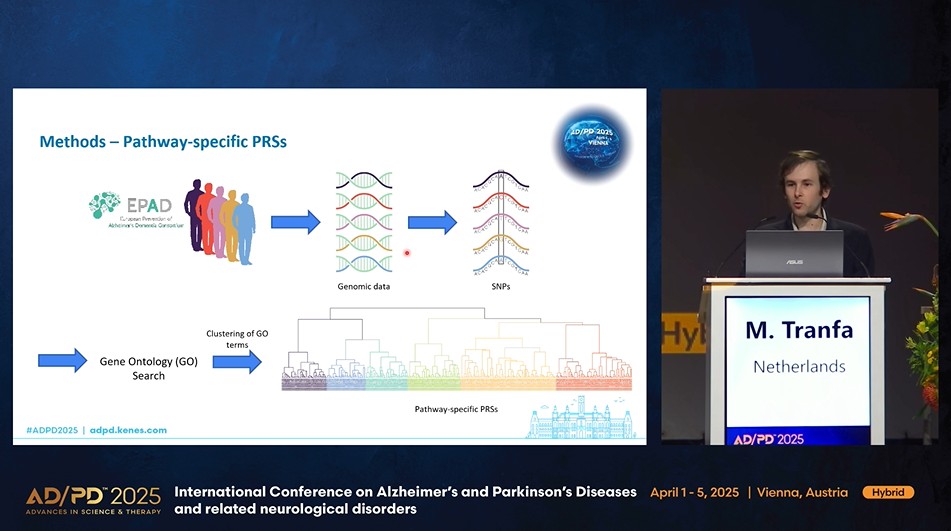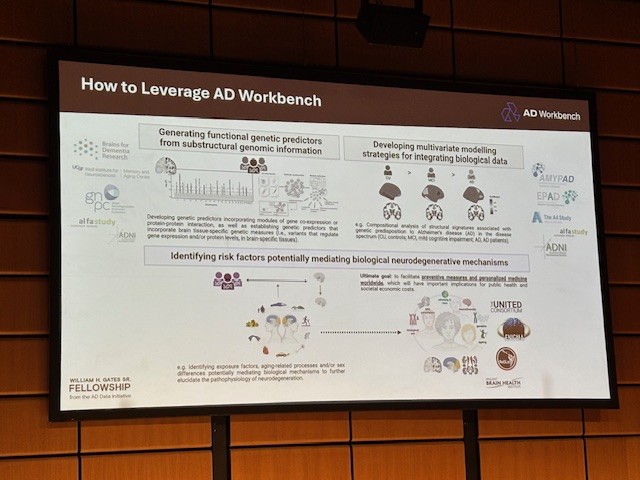“Cerebral Microbleeds and Amyloid Pathology Estimates From the Amyloid Biomarker Study”

Authors: Julie E Oomens, Veerle van Gils, Stephanie J B Vos, Whitney M Freeze, Nancy N Maserejian, Gioacchino Curiale, Cai Gillis , Mercè Boada, Wiesje M van der Flier, Jakub Hort, Sterling C Johnson, Alberto Lleó, Inez H Ramakers, Karen M Rodrigue, Pascual Sánchez-Juan, Marie Sarazin , Nikolaos Scarmeas, Henrik Zetterberg, Daniel Alcolea, Frederik Barkhof, Kaj Blennow, Michel Bottlaender , Anouk den Braber, Jirí Cerman, Marta Drake-Perez, Juan Fortea, Ron Handels , Silvia Ingala, Julio F Jiménez-Bonilla, Stratos Karavasilis, Julien Lagarde, Nienke Legdeur, Luigi Lorenzini, Marta Marquié , Justine E F Moonen, Pauline Olivieri, Adelina Orellana, Rik Ossenkoppele, Leonardo A Rivera-Rivera, Eloy Rodríguez-Rodriguez, Agustín Ruiz Laza, Charlotte E Teunissen, Betty M Tijms, Giorgos Velonakis, Frans R J Verhey, Pieter Jelle Visser, Willemijn J Jansen ; European Prevention of Alzheimer’s Dementia (EPAD) Consortium; Fundació ACE Healthy Brain Initiative (FACEHBI) Study Group; BIOFACE Study Group
Abstract:
Importance: Baseline cerebral microbleeds (CMBs) and APOE ε4 allele copy number are important risk factors for amyloid-related imaging abnormalities in patients with Alzheimer disease (AD) receiving therapies to lower amyloid-β plaque levels.
Objective: To provide prevalence estimates of any, no more than 4, or fewer than 2 CMBs in association with amyloid status, APOE ε4 copy number, and age.
Design, setting, and participants: This cross-sectional study used data included in the Amyloid Biomarker Study data pooling initiative (January 1, 2012, to the present [data collection is ongoing]). Data from 15 research and memory clinic studies were pooled and harmonized. Participants included individuals for whom data on age, cognitive status, amyloid status, and presence of CMBs were available. Data were analyzed from October 22, 2023, to April 26, 2024.
Main outcomes and measures: The main outcomes were age, cognitive status, amyloid status and presence, location, and number of CMBs. Presence of amyloid pathology was determined based on 42 amino acid-long form of amyloid-β peptide (Aβ42) levels in cerebrospinal fluid or on amyloid-positron emission tomography. Presence and, in a subset, location (lobar vs deep) and number of CMBs were determined on magnetic resonance imaging (locally with visual rating).
Results: Among 4080 participants included in the analysis, the mean (SD) age was 66.5 (8.9) years, and 2241 (54.9%) were female. A total of 2973 participants had no cognitive impairment (cognitive unimpairment [CU]), and 1107 had mild cognitive impairment (MCI) or AD dementia (ADD). One thousand five hundred and thirteen participants (37.1%) had amyloid pathology, 1368 of 3599 (38.0%) with data available were APOE ε4 carriers, and 648 (15.9%) had CMBs. In the CU group, amyloid pathology and APOE ε4 copy number were not associated with presence of any, no more than 4, or fewer than 2 CMBs but were associated with increased odds of lobar CMBs (odds ratio [OR] for amyloid, 1.42 [95% CI, 1.20-1.69], P < .001; OR for 2 vs 0 alleles, 1.81 [95% CI, 1.19-2.74], P = .006; OR for 1 vs 0 alleles, 1.10 [95% CI, 0.83-1.46], P = .49; and OR for 2 vs 1 allele, 1.64 [95% CI, 0.90-2.97], P = .11; overall P = .02). In the MCI-ADD group, amyloid pathology was associated with presence of any CMBs (OR, 1.51 [95% CI, 1.17-1.96], P = .002), no more than 4 CMBs (OR, 1.44 [95% CI, 1.18-1.82], P = .002), and fewer than 2 CMBs (OR 1.34 [95% CI, 1.03-1.74], P = .03) but not lobar CMBs. APOE ε4 copy number was associated with presence of any (OR for 2 vs 0 alleles, 1.72 [95% CI, 0.88-3.35], P = .11; OR for 1 vs 0 alleles, 0.78 [95% CI, 0.59-1.04], P = .09; and OR for 2 vs 1 allele, 2.20 [95% CI, 1.32-3.67], P = .002; overall P < .001) and no more than 4 CMBs (OR for 2 vs 0 alleles, 1.31 [95% CI, 0.64-2.68], P = .45; OR for 1 vs 0 alleles, 0.75 [95% CI, 0.54-1.04], P = .08; and OR for 2 vs 1 allele, 1.76 [95% CI, 0.97-3.19], P = .06; overall P = .03) but not with fewer than 2 or lobar CMBs. Prevalence estimates of CMBs ranged from 6% at 50 years of age in a non-APOE ε4 allele carrier with no amyloid pathology and no cognitive impairment to 52% at 90 years of age in an APOE ε4 homozygote carrier with amyloid pathology and cognitive impairment.
Conclusions and relevance: In this cross-sectional study of 4080 participants, prevalence estimates of CMBs were associated with amyloid status, APOE ε4 copy number, and age. CMB prevalence estimates may help inform safety evaluations for antiamyloid clinical trials.
DOI: 10.1001/jamanetworkopen.2024.55571
Published online: 22 January 2025 in the journal JAMA Network Open





